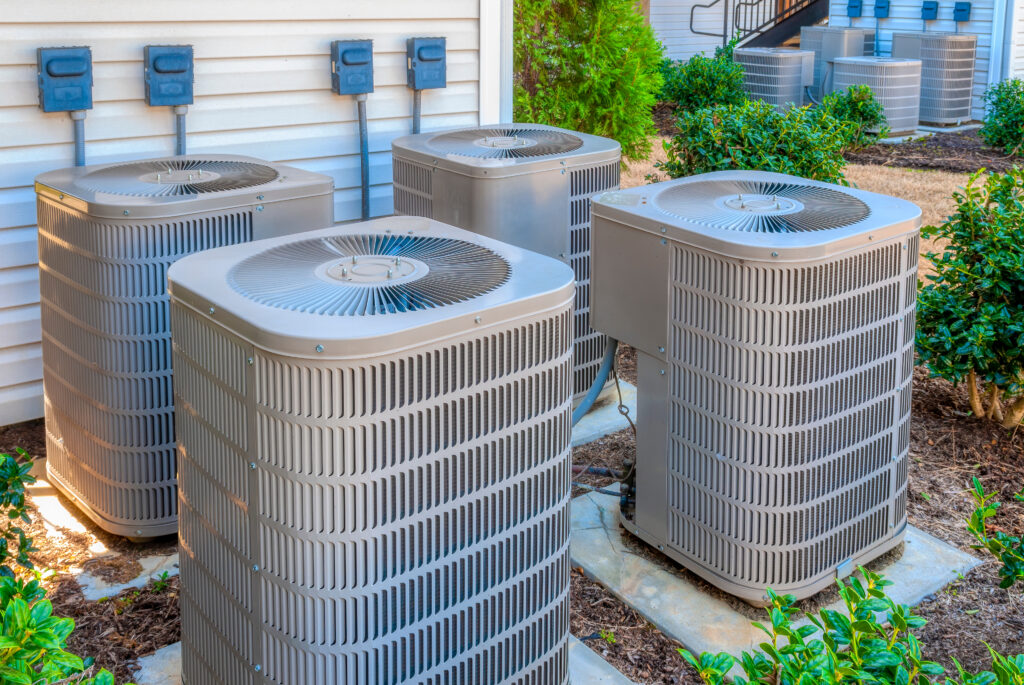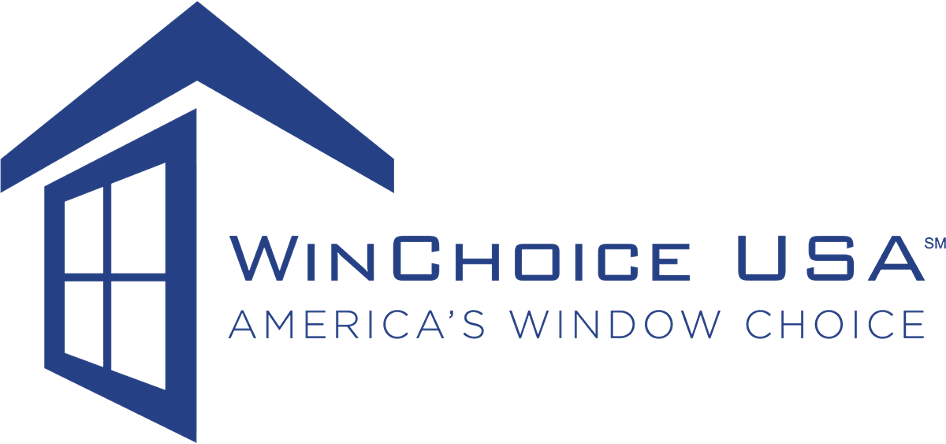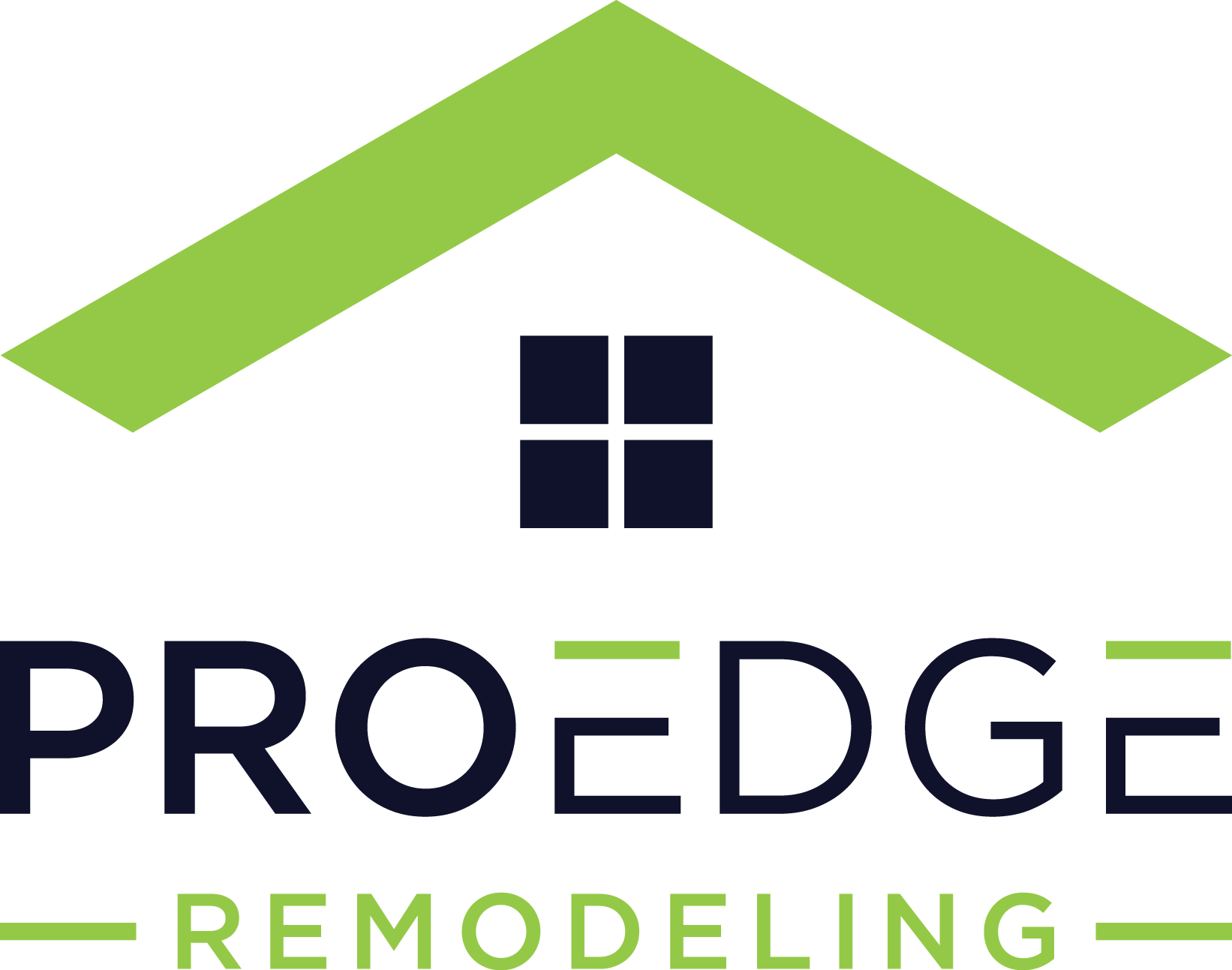Central Air Conditioning Cost Guide

Installing central air conditioning is a major investment that can significantly improve your home’s comfort and value. Most homeowners can expect to spend between $5,000 and $12,000, depending on the system and installation needs.
To avoid unexpected costs and make smart choices, it’s important to understand what drives pricing. From equipment type and energy efficiency to labor requirements and potential rebates, this guide explains every factor that affects the total cost. You’ll also find tips on how to save money over time through smarter planning and energy-conscious decisions.
Table of Contents
Average Cost of Central Air Conditioning (2025)
Central air conditioning costs vary significantly based on system specifications, home requirements, and regional factors. Understanding these baseline costs helps establish realistic budget expectations for your project.
The national average cost for central air conditioning installation is $5,964, with typical ranges between $5,000 and $12,000. However, costs can extend from $1,495 for basic replacements to $12,400 for complex installations requiring extensive ductwork modifications.
Cost with and without ductwork
Existing ductwork significantly impacts total installation costs. Homes with functioning ductwork typically see costs between $4,500 and $7,500 for system replacement. New ductwork installation adds substantial expense, with complete systems ranging from $1,500 to $16,000 for 275 linear feet needed to cover an average 2,500-square-foot home.
Installed price vs. unit-only price
Central air conditioner units alone cost $1,000 to $5,000, depending on capacity and efficiency ratings. Installation labor adds $1,500 to $2,500, representing 40% to 60% of total project costs. This breakdown explains why professional installation costs often equal or exceed equipment prices.
New installation vs. replacement comparison
Replacement installations in homes with compatible ductwork and electrical systems typically cost 30% to 50% less than new installations. New installations require additional components like ductwork, electrical upgrades, and permits, which can add $3,000 to $8,000 to base equipment and labor costs.
Cost by System Type and Size
System configuration and capacity directly determine equipment costs and installation complexity. Choosing the appropriate type and size ensures optimal performance while controlling expenses.
Split-system AC (most common)
Split-system air conditioners, featuring separate indoor and outdoor units, represent the most popular residential choice. These systems cost $1,900 to $4,200 for equipment alone, with total installed costs ranging from $4,500 to $8,000. Split systems offer flexibility in placement and typically provide better efficiency than packaged units.
Packaged AC systems
Packaged systems house all components in a single outdoor unit, making them ideal for homes without basements or suitable attic space. Equipment costs range from $2,300 to $5,500, with installation typically less complex than split systems. Total installed costs generally fall between $5,000 and $9,000.
Cost by ton (2-ton, 3-ton, etc.)
Air conditioning capacity, measured in tons, directly correlates with cost. One ton equals 12,000 BTUs of cooling capacity and typically serves 450 to 600 square feet. Common residential sizes include:
- 1.5–2 tons: $3,500–$5,500 installed (covers up to 1,200 sq ft)
- 2.5–3 tons: $4,500–$7,000 installed (suitable for 1,200–1,800 sq ft)
- 3.5–4 tons: $5,500–$8,500 installed (suitable for 1,800–2,400 sq ft)
- 4.5–5 tons: $7,000–$10,000 installed (suitable for 2,400+ sq ft)
How to size an AC unit based on square footage
Proper sizing prevents inefficient operation and premature equipment failure. The standard calculation requires 20 BTUs per square foot of living space. A 2,000-square-foot home needs approximately 40,000 BTUs, equivalent to a 3.3-ton system. However, factors like insulation quality, ceiling height, window orientation, and local climate affect actual requirements.
Professional load calculations using Manual J methodology provide accurate sizing by considering all variables affecting cooling demands. This analysis ensures optimal system performance and prevents costly oversizing or undersizing errors.
Table 1: Central AC Cost by Home Size and System Type
Home Size | Square Footage | Recommended Tonnage | Split System Cost | Packaged System Cost | With New Ductwork |
Small | 800-1,200 sq ft | 1.5-2 tons | $4,500-$6,000 | $5,000-$6,500 | $8,000-$12,000 |
Medium | 1,200-1,800 sq ft | 2-3 tons | $5,500-$7,500 | $6,000-$8,000 | $9,500-$14,500 |
Large | 1,800-2,400 sq ft | 3-4 tons | $6,500-$9,000 | $7,000-$9,500 | $11,000-$16,500 |
Extra Large | 2,400+ sq ft | 4-5 tons | $8,000-$12,000 | $8,500-$12,500 | $13,500-$20,000 |
Factors That Affect Central AC Cost
Multiple variables influence central air conditioning costs beyond basic equipment and installation. Understanding these factors helps predict total project expenses and identify potential cost-saving opportunities.
Unit size and brand
Larger capacity systems cost more due to increased materials and more powerful components. Premium brands like Carrier, Trane, and Lennox typically cost two to three times more than budget options like Goodman, reflecting differences in build quality, features, and warranty coverage.
Table 2: Top Central AC Brands Comparison
Brand | Price Range | SEER2 Range | Warranty | Best For | Notable Features |
Carrier | $$$ | 13.8-24 SEER2 | 10 years | Premium reliability | Greenspeed technology |
Trane | $$$ | 14.8-22 SEER2 | 10 years | Durability | TruComfort variable speed |
Lennox | $$$$ | 14.3-28 SEER2 | 5-10 years | Highest efficiency | SunSource solar compatibility |
Goodman | $$ | 13.8-18 SEER2 | 10 years | Budget-conscious | Best value proposition |
Rheem | $$ | 14.3-20 SEER2 | 10 years | Mid-range quality | EcoNet smart controls |
Energy efficiency (SEER ratings)
SEER2 ratings measure seasonal cooling efficiency, with higher ratings indicating greater efficiency but increased upfront costs. Current minimum standards require 14 SEER2 in northern states and 15 SEER2 in southern regions. High-efficiency units reaching 20+ SEER2 can cost $3,000 to $5,000 more than standard models.
Condition of existing ductwork
The condition of existing ductwork can significantly impact your installation costs. Well-maintained ducts may require only minor modifications, while damaged or undersized systems need partial or complete replacement. Ductwork replacement costs $20 to $60 per linear foot, with complete home systems requiring 150 to 350 linear feet depending on size and layout.
Complexity of installation
Installation complexity varies based on home characteristics and access limitations. Multi-story homes, cramped attic spaces, and challenging outdoor unit placement increase labor time and costs. Complex installations may require additional permits, structural modifications, or specialized equipment, adding $1,000 to $3,000 to standard installation costs.
Local labor rates and permitting fees
Geographic location affects both labor costs and permit requirements. Urban areas typically see higher labor rates, with contractors charging $75 to $250 per hour compared to $50 to $150 in rural regions. Permit costs range from $250 to $1,500, with local building departments setting specific requirements for electrical, mechanical, and structural work.
Installation Costs
Professional installation ensures proper system operation, warranty compliance, and code adherence. Understanding installation cost components helps evaluate contractor estimates and identify potential additional expenses.
Installation labor represents the largest single cost component after equipment, typically ranging from $1,500 to $2,500 for standard replacements. New installations requiring ductwork, electrical upgrades, or structural modifications can reach $4,000 to $6,000 in labor costs.
Labor breakdown: HVAC technician rates
HVAC contractors charge $75 to $250 per hour depending on experience, certification level, and regional market conditions. Master technicians and those with specialized certifications command premium rates, while apprentice-level workers handle basic tasks at lower hourly costs.
Time required for a standard install
Standard central air installations using existing ductwork typically require 6 to 12 hours, completed over one to two days. New installations with ductwork can extend to 3 to 5 days, depending on home size and complexity. Weather conditions, permit inspections, and equipment delivery schedules may extend project timelines.
Additional costs: ductwork modifications, electrical upgrades
Many installations require supplementary work beyond basic equipment installation. Common additional costs include:
- Ductwork sealing and insulation: $800 to $2,000
- Electrical panel upgrades: $1,200 to $3,000
- Condenser pad installation: $40 to $250
- Thermostat replacement: $140 to $350
- Refrigerant line replacement: $200 to $650
Table 3: Installation Cost Breakdown
Cost Component | Percentage of Total | Typical Cost Range | Notes |
Equipment | 40-50% | $2,500-$6,000 | Varies by size and efficiency |
Labor | 30-40% | $1,500-$3,500 | Includes installation and setup |
Ductwork (if needed) | 20-35% | $2,000-$6,000 | New installation only |
Permits & Inspections | 2-5% | $250-$800 | Required in most areas |
Additional Materials | 5-10% | $300-$800 | Electrical, refrigerant lines, etc. |
Tips for hiring a qualified contractor
Selecting qualified contractors protects your investment and ensures code-compliant installation. Verify state licensing, insurance coverage, and manufacturer certifications. Request at least three detailed estimates, check references from recent customers, and confirm warranty terms before signing contracts.
Look for contractors certified by North American Technician Excellence (NATE) or factory-authorized by your chosen equipment manufacturer. These certifications indicate ongoing training and adherence to industry best practices.
Energy Efficiency and Long-Term Savings
High-efficiency air conditioning systems cost more initially but provide significant long-term savings through reduced energy consumption. Understanding efficiency metrics and potential savings helps justify premium equipment investments.
How SEER rating impacts energy bills
SEER2 ratings directly correlate with operating costs, as higher-rated systems consume less electricity for equivalent cooling output. A 16 SEER2 system uses approximately 20% less energy than a 13 SEER2 unit, potentially saving $200 to $400 annually in moderate climates.
However, the cost-benefit analysis varies by climate zone and usage patterns. Homes in hot, humid regions see greater savings from high-efficiency systems due to extended cooling seasons and higher usage demands.
Choosing the right efficiency for your climate
Climate conditions determine optimal efficiency levels for cost-effective operation. Hot southern climates justify premium efficiency investments through extended cooling seasons, while moderate northern climates may not recoup higher equipment costs through energy savings alone.
Consider local utility rates, as areas with expensive electricity see greater returns from efficiency upgrades. Time-of-use pricing structures that charge premium rates during peak hours make high-efficiency systems particularly attractive.
Comparing upfront cost vs. long-term value
Efficiency upgrades typically pay for themselves through energy savings over 7 to 12 years, depending on usage patterns and local utility rates. Factor in available rebates and tax credits when calculating payback periods, as these incentives can reduce effective payback times significantly.
Calculate total cost of ownership including purchase price, installation, maintenance, and energy costs over the system’s expected 15 to 20-year lifespan for accurate value comparisons.
Table 4: SEER2 Efficiency Rating Cost Comparison
SEER2 Rating | Efficiency Level | Equipment Premium | Annual Energy Savings* | Payback Period |
14.3 | Minimum Standard | Base Price | $0 (baseline) | N/A |
16.0 | Good Efficiency | +$800-$1,500 | $150-$300 | 5-7 years |
18.0 | High Efficiency | +$1,500-$2,500 | $250-$450 | 6-8 years |
20.0+ | Premium Efficiency | +$2,500-$4,000 | $350-$600 | 7-10 years |
*Based on 2,000 sq ft home in moderate climate with $0.12/kWh electricity rate
Cost of Replacing vs. Repairing Central AC
Determining whether to repair or replace existing central air conditioning requires evaluating system age, repair costs, and performance issues. Making the right choice prevents unnecessary expenses while ensuring reliable cooling.
When repair is cost-effective
The 50% rule provides clear guidance: if repair costs equal half the replacement price, choose replacement instead. For systems under 10 years old with good maintenance history, repairs typically make financial sense unless major components like compressors or evaporator coils fail.
Consider repair costs relative to system age and efficiency. Spending $1,500 on repairs for a 15-year-old, low-efficiency system rarely provides good value compared to replacement with a modern, efficient unit.
Signs it’s time to replace
Several indicators suggest replacement over repair provides better long-term value:
- System age exceeding 15 years with declining efficiency
- Refrigerant type requiring expensive R-22 replacement
- Frequent repairs totaling more than $1,000 annually
- Inability to maintain comfortable temperatures despite proper operation
- Rising energy bills indicating declining efficiency
Pros and cons of replacement
Replacement advantages include improved efficiency, enhanced reliability, updated features like smart controls, and comprehensive warranty coverage. Modern systems also use environmentally-friendly refrigerants and meet current building codes.
Replacement disadvantages center on high upfront costs and installation disruption. However, available rebates and financing options can offset initial expenses while new systems typically require minimal maintenance for several years.
Ways to Save on Central AC Installation
Multiple cost-reduction strategies can significantly lower central air conditioning installation expenses. Combining these approaches maximizes savings while maintaining quality and performance standards.
Federal and state tax credits or rebates
The federal tax credit program offers substantial savings for qualifying high-efficiency systems. Central air conditioners meeting SEER2 requirements of 17.0 or higher for split systems and 16.0 for packaged units qualify for 30% tax credits up to $600.
State and local programs provide additional incentives varying by location. Some states offer rebates ranging from $200 to $1,500 for ENERGY STAR certified equipment, while others provide low-interest financing for efficiency upgrades.
Utility company incentives
Local utility companies frequently offer rebates encouraging high-efficiency equipment installation. These programs typically provide $150 to $1,000 rebates based on SEER2 ratings and equipment type. Contact your utility provider for current program details and application procedures.
Some utilities offer additional benefits like free energy audits, discounted maintenance programs, or time-of-use rate schedules that reduce operating costs for efficient systems.
Seasonal sales or off-peak discounts
Timing installations during off-peak seasons provides significant savings opportunities. Spring and fall installations typically cost 10% to 15% less than peak summer installations due to reduced contractor demand and equipment pricing.
Manufacturers often offer promotional rebates during slow seasons, providing additional savings of $300 to $1,500 on qualifying equipment. Plan ahead to take advantage of these seasonal opportunities.
Table 5: Seasonal Installation Pricing
Season | Demand Level | Typical Savings | Contractor Availability | Best For |
Winter (Dec-Feb) | Low | 5-10% | High | Emergency replacements |
Spring (Mar-May) | Moderate | 10-15% | Good | Planned installations |
Summer (Jun-Aug) | High | None | Limited | Emergency only |
Fall (Sep-Nov) | Low | 10-15% | High | Best overall value |
Financing and payment plan options
Multiple financing options help manage installation costs without depleting savings. Home equity loans and lines of credit typically offer lower interest rates than personal loans or credit cards. Many contractors also provide promotional financing with deferred interest periods for qualified buyers.
Consider the total cost of financing when evaluating options, as longer payment terms may offset initial interest rate advantages through accumulated interest charges.
FAQs
How long does a central AC unit last?
Central air conditioning systems typically last 15 to 20 years with proper maintenance. Premium brands may extend slightly longer, while budget systems might require replacement after 12 to 15 years. Regular maintenance, including annual tune-ups and filter changes, significantly impacts lifespan.
Do I need to replace my furnace too?
Furnace replacement isn’t always necessary when installing central air conditioning. If your existing furnace is less than 10 years old and properly sized for the new air conditioning system, it may work effectively. However, older furnaces or those requiring significant repairs may justify complete system replacement for optimal efficiency and reliability.
How can I tell what size AC I need?
Professional load calculations provide the most accurate sizing, but you can estimate requirements using 20 BTUs per square foot of living space. A 2,000-square-foot home needs approximately 40,000 BTUs or a 3.3-ton system. Factors like insulation, ceiling height, and window orientation affect actual requirements.
Is central air more efficient than window units or ductless mini-splits?
Central air conditioning systems typically provide the most cost-effective cooling for whole-home applications when ductwork already exists. Ductless mini-splits offer higher efficiency ratings but cost more for multiple-room installations. Window units work well for single rooms but become expensive and inefficient for whole-home cooling.
Conclusion
Installing central air conditioning is a major expense, typically costing between $5,000 and $12,000. Your final cost will depend on factors like system size, energy efficiency, ductwork needs, and local labor rates. Fortunately, tax credits and rebates can reduce your net expense by $600 to $2,000.
Choosing the right system size through professional load calculations is critical. It ensures consistent comfort and prevents problems caused by an oversized or undersized unit. While high-efficiency models come with a higher upfront price, they often pay for themselves over time through lower utility bills, especially in regions with long, hot summers.
To keep costs down, consider scheduling your installation during off-peak months when demand is lower. You might save 10 to 15 percent this way. Also explore financing options to spread out the upfront investment.
Always work with licensed and insured contractors who offer detailed written estimates, manufacturer credentials, and solid warranty coverage. Getting quotes from multiple reputable installers helps you compare pricing and ensure the job meets local codes and performance standards. With the right planning and professional support, your central air investment can deliver comfort and savings for years to come.
Find trusted HVAC pros near you for a free estimate.

Anna has over six years of experience in the home services and journalism industries and serves as the Content Manager at MyHomePros.com, specializing in making complex home improvement topics like HVAC, roofing, and plumbing accessible to all. With a bachelor’s degree in journalism from Auburn University, she excels in crafting localized, comprehensive guides that cater to homeowners’ unique needs. Living on both coasts of the United States has equipped her with a distinctive perspective, fueling her passion for turning any house into a cherished home through informed, personalized decision-making.








